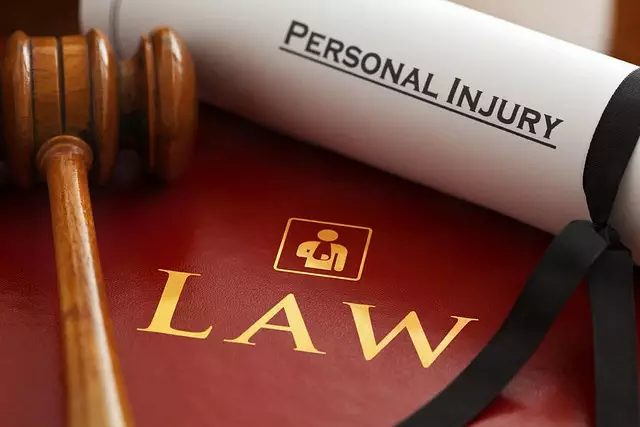In Manhattan, cyclists enjoy legal protections similar to vehicle operators, but safety remains a shared responsibility. Cyclists must follow traffic rules, wear protective gear, and signal movements while drivers should check blind spots and respect cyclist space. Accidents involving intoxicated riders or distracted cycling can have severe consequences. Consulting a DWI/DUI Accident Lawyer is crucial for understanding post-accident procedures, legal rights, insurance negotiations, and potential legal representation. Improved driver education, stricter traffic enforcement, and dedicated infrastructure are needed to enhance safety for cyclists in Manhattan's urban environment.
In Manhattan, cyclists face unique challenges navigating crowded streets and bustling traffic. This article serves as a comprehensive guide to understanding cyclist rights and safety, delving into the legal framework surrounding DWI/DUI laws and their implications for riders. We explore common causes of cycling accidents and provide crucial insights on post-accident procedures. Additionally, real-world case studies offer valuable lessons learned, emphasizing the importance of knowledge and awareness for both cyclists and DWI/DUI accident lawyers navigating this urban landscape.
- Understanding Cyclist Rights and Safety in Manhattan
- The Legal Framework: DWI/DUI Laws and Their Relevance to Cyclists
- Common Causes of Cycling Accidents in the City
- Navigating Post-Accident Procedures for Cyclists
- Case Studies: Real-World Examples and Lessons Learned
Understanding Cyclist Rights and Safety in Manhattan

In Manhattan, cyclists have specific rights and protections under the law. Understanding these rights is crucial for both riders and motorists to ensure safe navigation on city streets. Cyclists are considered vehicle operators and have the same rights as drivers, including the right to occupy the road, make turns, and follow traffic signals. However, they must also adhere to certain rules, such as yielding to pedestrians and signaling their movements clearly.
Safety for cyclists is a shared responsibility between riders and drivers. Cyclists should wear protective gear, stay alert, and follow traffic laws to minimize risks. Conversely, motorists need to be extra cautious when sharing the road with bikes, checking their blind spots, and respecting cyclist space. Seeking guidance from a DWI/DUI Accident Lawyer can also be beneficial for understanding legal protections and responsibilities in case of accidents involving cyclists.
The Legal Framework: DWI/DUI Laws and Their Relevance to Cyclists

In Manhattan, as in many urban areas, cyclists face unique challenges navigating the roads alongside motor vehicles. The Legal Framework governing this relationship is multifaceted and includes laws related to DWI/DUI (Driving While Intoxicated/Drunk Driving). These laws are relevant to cyclists because they establish responsible behavior standards for all road users. A DWI/DUI Accident Lawyer in Manhattan emphasizes that cyclists, like drivers, must operate their vehicles (in this case, bikes) safely and legally.
Violation of these laws can lead to severe consequences for cyclists, just as it does for motorists. Understanding the rules is crucial for ensuring safety and avoiding accidents. Cyclists have rights and responsibilities on Manhattan’s roads, and adhering to the legal framework helps foster a culture of shared respect and accountability among all road users.
Common Causes of Cycling Accidents in the City

In the bustling metropolis of Manhattan, where cyclists navigate tight spaces and heavy traffic, accidents can occur due to various factors. One of the primary causes is the disregard for traffic rules by both drivers and cyclists. Cyclists who fail to yield or run red lights put themselves and others at risk, especially in busy intersections. Additionally, distracted riding, such as using mobile devices while cycling, has become a growing concern. These distractions can lead to serious accidents, particularly when combined with Manhattan’s fast-paced urban environment.
Another significant contributor to cycling accidents is the presence of intoxicated riders. Similar to DWI/DUI incidents involving motor vehicles, cycling under the influence impairs judgment and reflexes. Cyclists may make unsafe decisions, struggle with coordination, and fail to perceive potential hazards, increasing the likelihood of collisions. Given the city’s vibrant nightlife, it’s crucial for cyclists and law enforcement to remain vigilant in identifying and addressing such cases to ensure safer streets for all users.
Navigating Post-Accident Procedures for Cyclists

After a cycling accident in Manhattan, navigating post-accident procedures is crucial for cyclists to protect their rights and seek justice. The first step is to assess any injuries and ensure immediate medical attention if needed. Once safe, document the scene by taking photos of the accident location, including any visible damage to bikes or surrounding infrastructure. Exchange information with other parties involved, such as witnesses and drivers, collecting names, contact details, and insurance information. It’s advisable to inform law enforcement about the incident, especially if there are significant injuries or property damages.
For cyclists concerned about their legal rights, consulting a DWI/DUI Accident Lawyer is beneficial. These experts can guide cyclists through the post-accident process, ensuring they understand their rights and obligations under New York City laws. They can also assist in negotiations with insurance companies and represent the cyclist if legal action is required. Quick action and proper documentation are key to navigating post-accident procedures, potentially leading to a favorable outcome for the cyclist.
Case Studies: Real-World Examples and Lessons Learned

In real-world scenarios, understanding cyclist right-of-way rules becomes paramount, especially in densely populated cities like Manhattan. Case studies reveal that despite clear regulations, cyclists often face challenges navigating the urban environment. For instance, a DWI/DUI Accident Lawyer might highlight a recent case where a bicyclist was struck by a vehicle making a left turn, violating the cyclist’s right-of-way. This incident underscores the importance of driver education and awareness, as well as the need for stricter enforcement of traffic laws.
Lessons learned from such incidents include the crucial role of infrastructure design, which can facilitate safer interactions between cyclists and motorists. For example, dedicated bike lanes and clear signage significantly reduce conflict points. Additionally, public awareness campaigns can educate both cyclists and drivers about shared responsibilities, potentially preventing future accidents.
Cycling in Manhattan comes with unique challenges, but understanding your rights and navigating the legal framework can help ensure safer rides. Familiarizing yourself with local laws, recognizing common accident causes, and knowing post-accident procedures are crucial steps. As you explore these insights, remember that each cycling journey contributes to a vibrant and sustainable city. Should you ever find yourself involved in a DWI/DUI accident, connecting with an experienced DWI/DUI Accident Lawyer can provide guidance and support tailored to your needs.
